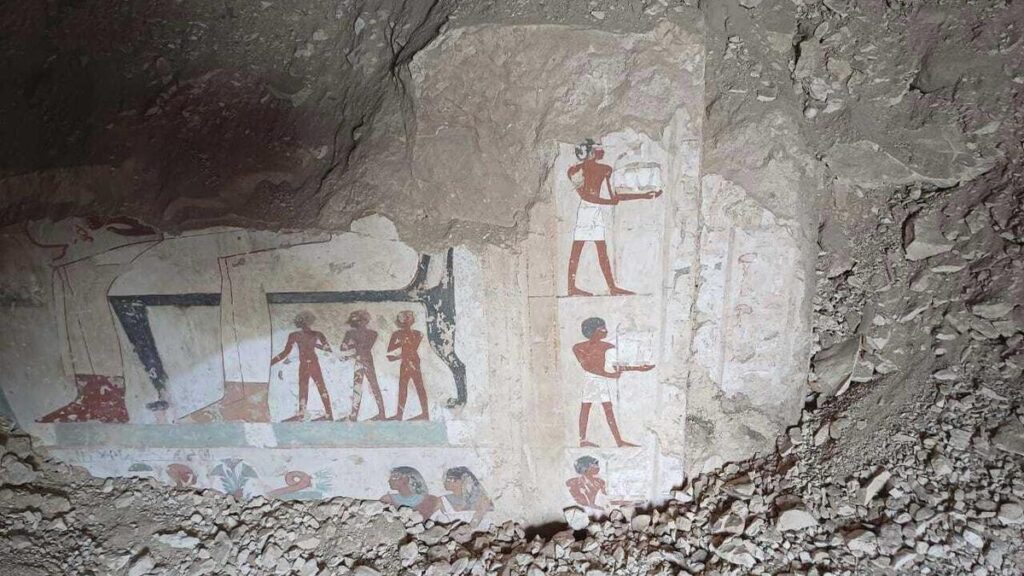Egypt has unveiled three new tombs of prominent statesman in the Dra Abu al-Naga necropolis in Luxor, officials say.
Egyptian archaeologists have discovered tombs dating back to the New Kingdom period (1550-1070 BC) and identified the names and titles of their owners through inscriptions found within, according to a statement by the tourism and antiquities ministry on Monday.
Mohamed Ismail Khaled, secretary-general of the Supreme Council of Antiquities, said in the statement that further study of other tombs’ inscriptions is needed to gain a deeper understanding of the tombs’ owners.
The ministry released pictures of items discovered in the tombs, including artefacts and statues. The discovery comes in the lead-up to the highly anticipated full opening of the Grand Egyptian Museum, which is expected this summer, though a final official date is yet to be confirmed. The museum will showcase more than 100,000 artefacts from Egypt’s rich ancient heritage.
One of the tombs discovered in Luxor on Monday belonged to Amum-em-Ipet, from the Ramesside period, who worked in the estate of Amun. His tomb was mostly destroyed and what remained were depictions of the funeral furniture carriers and a banquet.
Amun-Im-Ipet’s tomb begins with a small courtyard leading to an entrance and then a square hall ending with a niche, whose western wall was destroyed.
The other tombs date back to the 18th Dynasty and include one belonging to a man named Baki, who served as a supervisor of the grain silo. Another tomb contains the burial of an individual named “S”, who held multiple roles – he was a supervisor at the Temple of Amun in the oasis, a writer and the mayor of the northern oases.
Baki’s tomb has a courtyard leading to the main entrance of the tomb as well as a long corridor-like courtyard. It also has a transverse hall leading to another longitudinal hall that leads up to an unfinished chamber that contains a burial well.
Meanwhile, the other tomb that belongs to “S” has a small courtyard with a well, the tomb’s main entrance, and a transverse hall that leads to an incomplete longitudinal hall.
Minister of Tourism and Antiquities Sherif Fathi described the discovery as a significant scientific and archaeological achievement, noting that it is one of the areas poised to greatly boost cultural tourism and attract more visitors with an interest in Egypt’s rich heritage.
In January, Egypt made several discoveries near the famed city of Luxor, including ancient rock-cut tombs and burial shafts dating back 3600 years. They were unearthed at the causeway of Queen Hatshepsut’s funerary temple at Deir al-Bahri on the Nile’s West Bank.
Late last year, Egyptian and American archaeologists excavated an ancient tomb with 11 sealed burials near Luxor. The tomb, which dates to the Middle Kingdom, was found in the South Asasif necropolis, next to the Temple of Hatshepsut.



